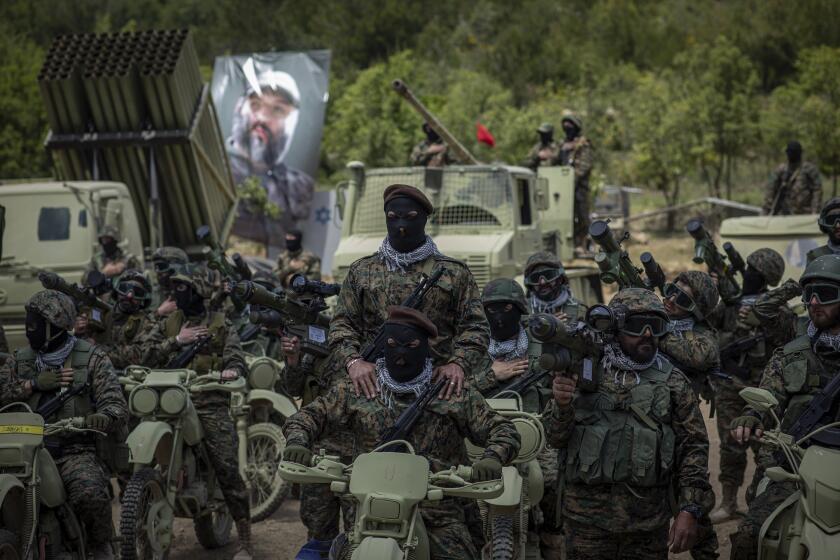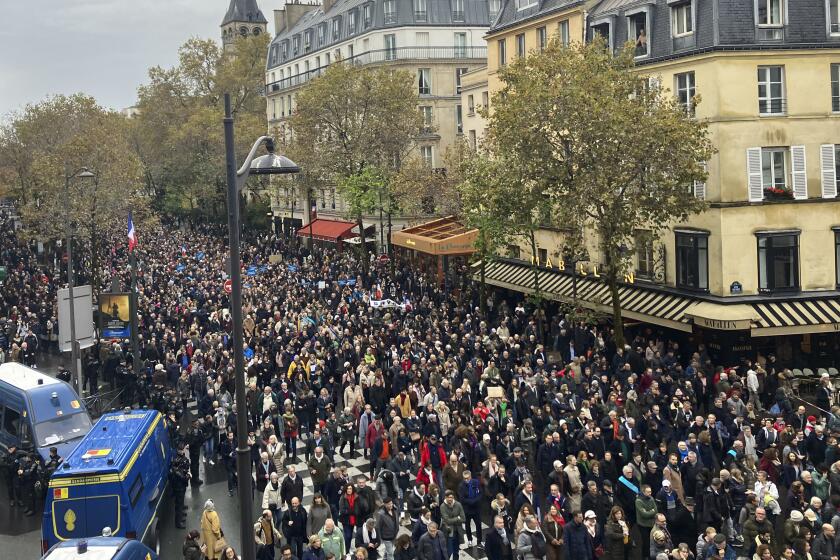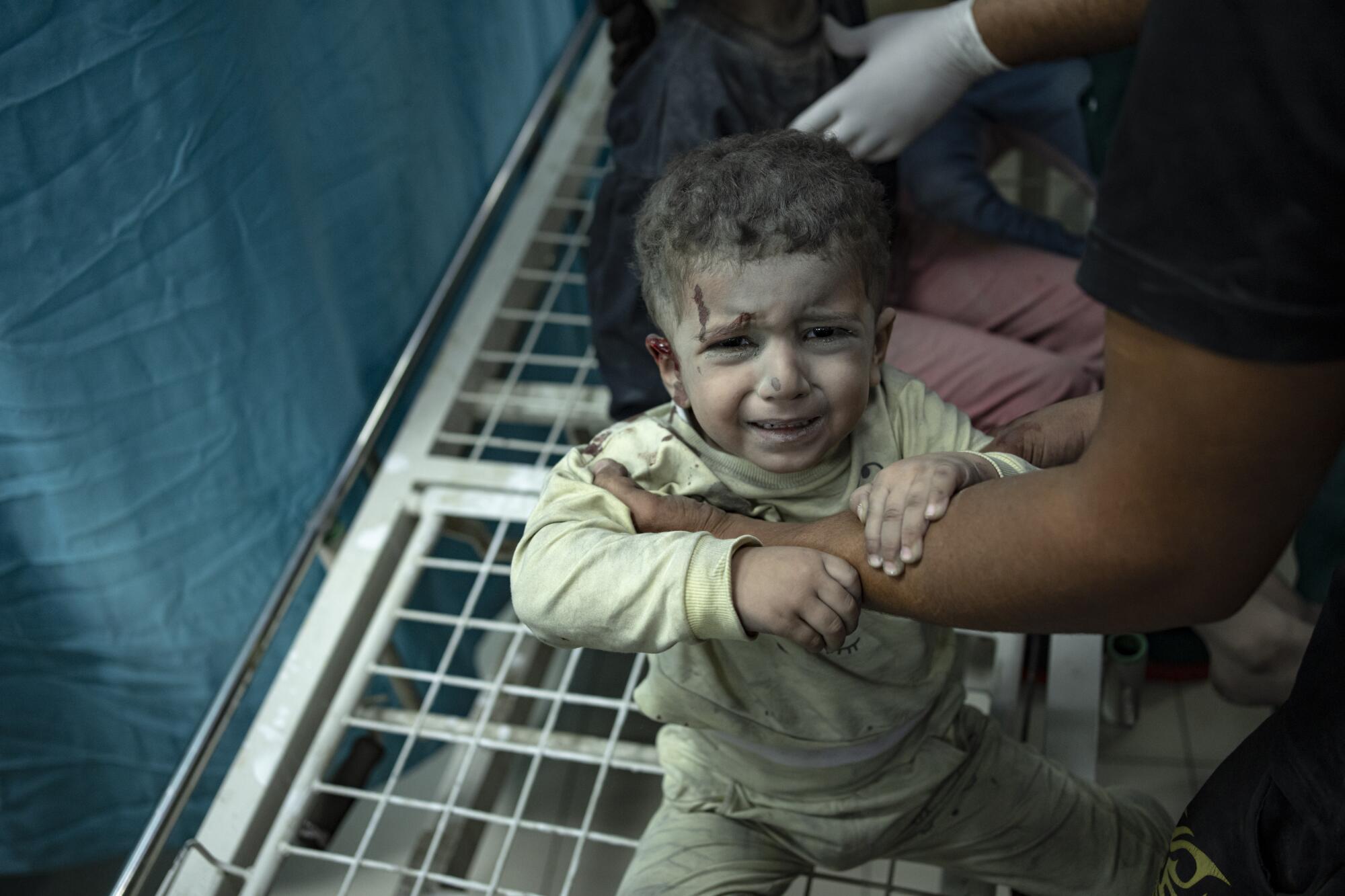
- Share via
DEIR AL BALAH, Gaza Strip — Battles between Israel and Hamas around hospitals have forced thousands of Palestinians to flee from some of the last perceived safe places in northern Gaza, stranding critically wounded patients, newborns and their caregivers with dwindling supplies and no electricity, health officials said Monday.
With Israeli forces fighting in the center of Gaza City, the territory’s main city, both sides have seized on the plight of hospitals as emblematic of the larger war, now in its sixth week. The fighting was triggered by Hamas’ Oct. 7 surprise attack on southern Israel, and Israel’s response has brought thousands of deaths — and unprecedented destruction across Gaza.
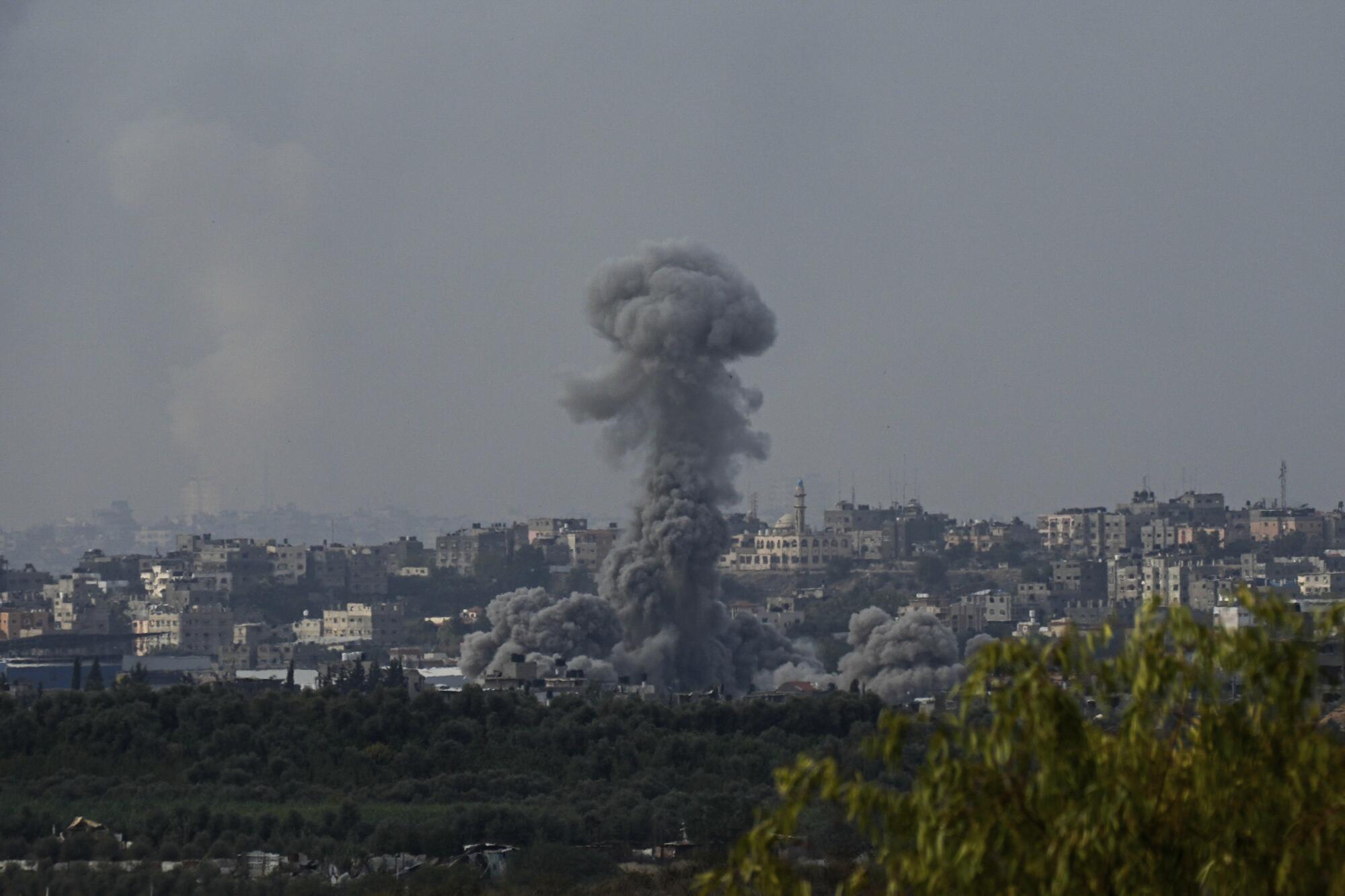
Gunfire and explosions raged Monday around Gaza City’s main hospital, Shifa, which has been encircled by Israeli troops for days. Tens of thousands of people have fled the hospital in the last few days and headed to the southern Gaza Strip, including large numbers of displaced people who had taken shelter there, as well as patients who could move.
The Israeli military has urged Palestinians to flee south on foot through what it calls safe corridors. But its stated goal of separating civilians from Hamas militants has come at a heavy cost: More than two-thirds of Gaza’s 2.3 million people have fled their homes.
For Palestinians, Shifa symbolizes the suffering of civilians. For weeks, staff running low on supplies have performed surgery there on war-wounded patients, including children, without anesthesia. After the weekend’s mass exodus, about 650 patients and 500 staff remain in the hospital, which can no longer function, along with around 2,500 displaced Palestinians sheltering inside with little food or water.
After power for Shifa’s incubators went out days ago, the Health Ministry in Hamas-ruled Gaza on Monday released a photo it says shows about a dozen premature babies wrapped in blankets together on a bed to keep them at a proper temperature. Otherwise, “they immediately die,” said the Health Ministry’s director general, Medhat Abbas, who added that four of the babies had been delivered by caesarean section after their mothers died.
The Israeli military says Hamas set up its main command center in and beneath the medical compound, though it has provided little evidence. Both Hamas and Shifa Hospital staff deny the Israeli allegations.
Hamas’ attack on Israel has hardened the settler movement. Increasing violence in the West Bank threatens to open another front in the conflict.
President Biden said Monday that Shifa “must be protected.”
“It is my hope and expectation that there will be less intrusive action,” Biden said in the Oval Office.
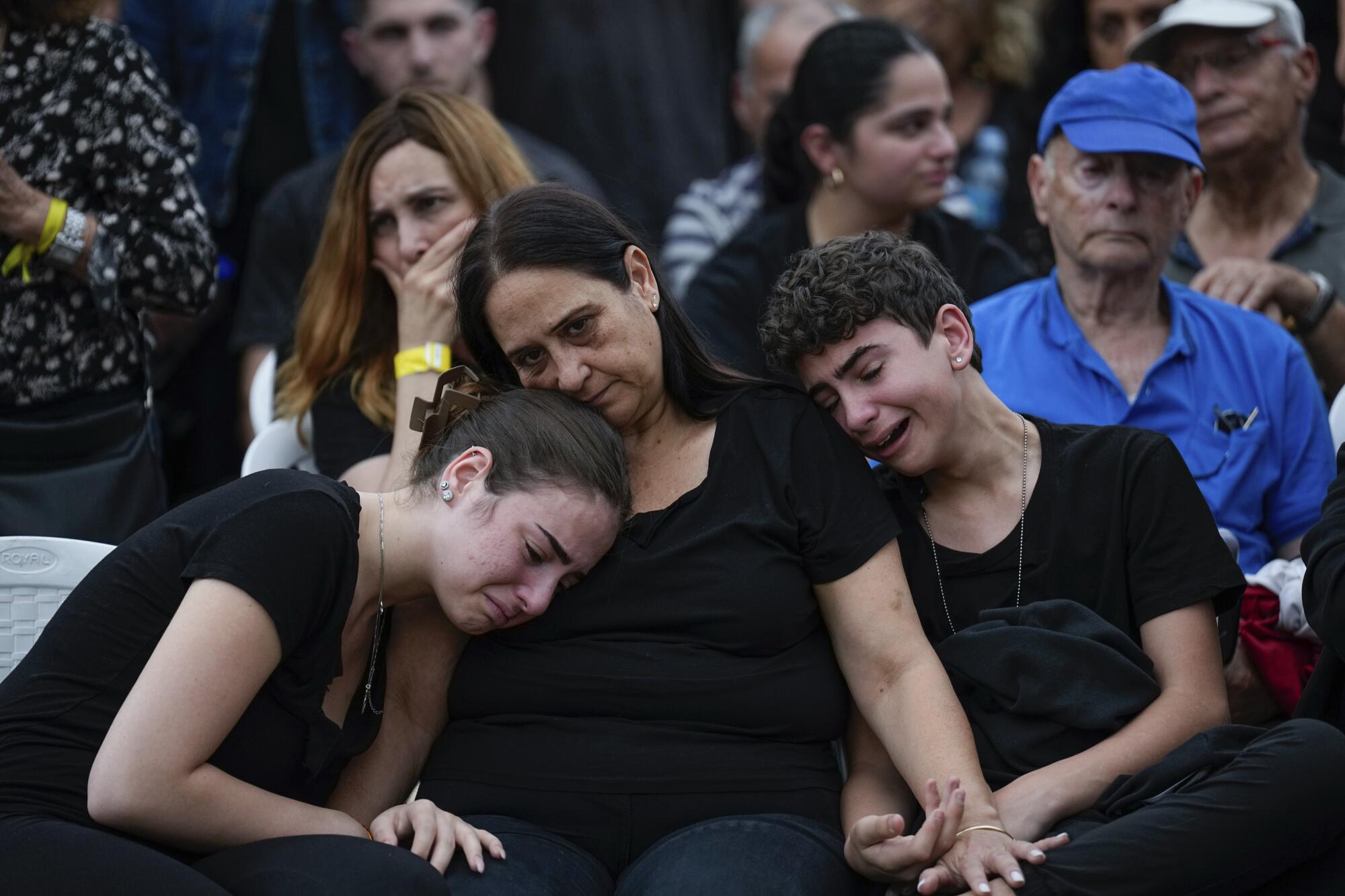
International law gives hospitals special protections during war. But hospitals can lose those protections if combatants use them to hide fighters or store weapons, according to the International Committee of the Red Cross.
Still, there must be plenty of warning to allow evacuation of staff and patients, and if harm to civilians from an attack is disproportionate to the military objective, it is illegal under international law. In an editorial published Friday in Britain’s Guardian newspaper, International Criminal Court prosecutor Karim Khan said the attacker must meet a high burden of proof to show that a hospital has lost its protections.
Israel accuses Hamas of using hospitals as cover for its fighters. On Monday, the military released video of a children’s hospital that its forces moved into over the weekend, showing weapons it said it found inside, as well as rooms in the basement where it believes the militants were holding some of the estimated 240 hostages they abducted during the initial attack.
“Hamas uses hospitals as an instrument of war,” said Rear Adm. Daniel Hagari, the army’s chief spokesman, standing in a room of the Rantisi Children’s Hospital decorated with a child’s colorful drawing of a tree, with explosives vests, grenades and rocket-propelled grenades displayed on the floor.
The Red Cross was attempting Monday to evacuate some 6,000 patients, staff and displaced people from another hospital, Al Quds, after it shut down for lack of fuel, but it said its convoy had to turn back because of shelling and fighting. On Monday, Israel released a video showing what it said was a militant with a rocket-propelled-grenade launcher entering the hospital. An Israeli tank was stationed nearby.
Lebanon-based Hezbollah is holding back from all-out war with Israel for now — but chances of a dangerous miscalculation by either side are high.
At Shifa Hospital, the Health Ministry said, 32 patients, including three babies, have died since the hospital’s emergency generator ran out of fuel Saturday. It said 36 additional babies, as well as other patients, are at risk of dying because there is no way to power lifesaving medical equipment.
Goudat Samy Madhoun, a healthcare worker, said he was among about 50 patients, staff and displaced people who made it out of Shifa and to the south Monday, including a woman who had been receiving kidney dialysis. He said those remaining in the hospital were mainly eating dates.
Madhoun said Israeli forces fired on the group several times, wounding one man who had to be left behind. The dialysis patient’s son was detained at an Israeli checkpoint on the road south, he said.
The Israeli military said that it had placed 79 gallons of fuel near the hospital but that Hamas militants had prevented staff from accessing it. The Health Ministry disputed that, saying Israel refused its request that the Red Crescent bring them the fuel rather than staff venturing out for it. The fuel would have provided less than an hour of electricity, it said.
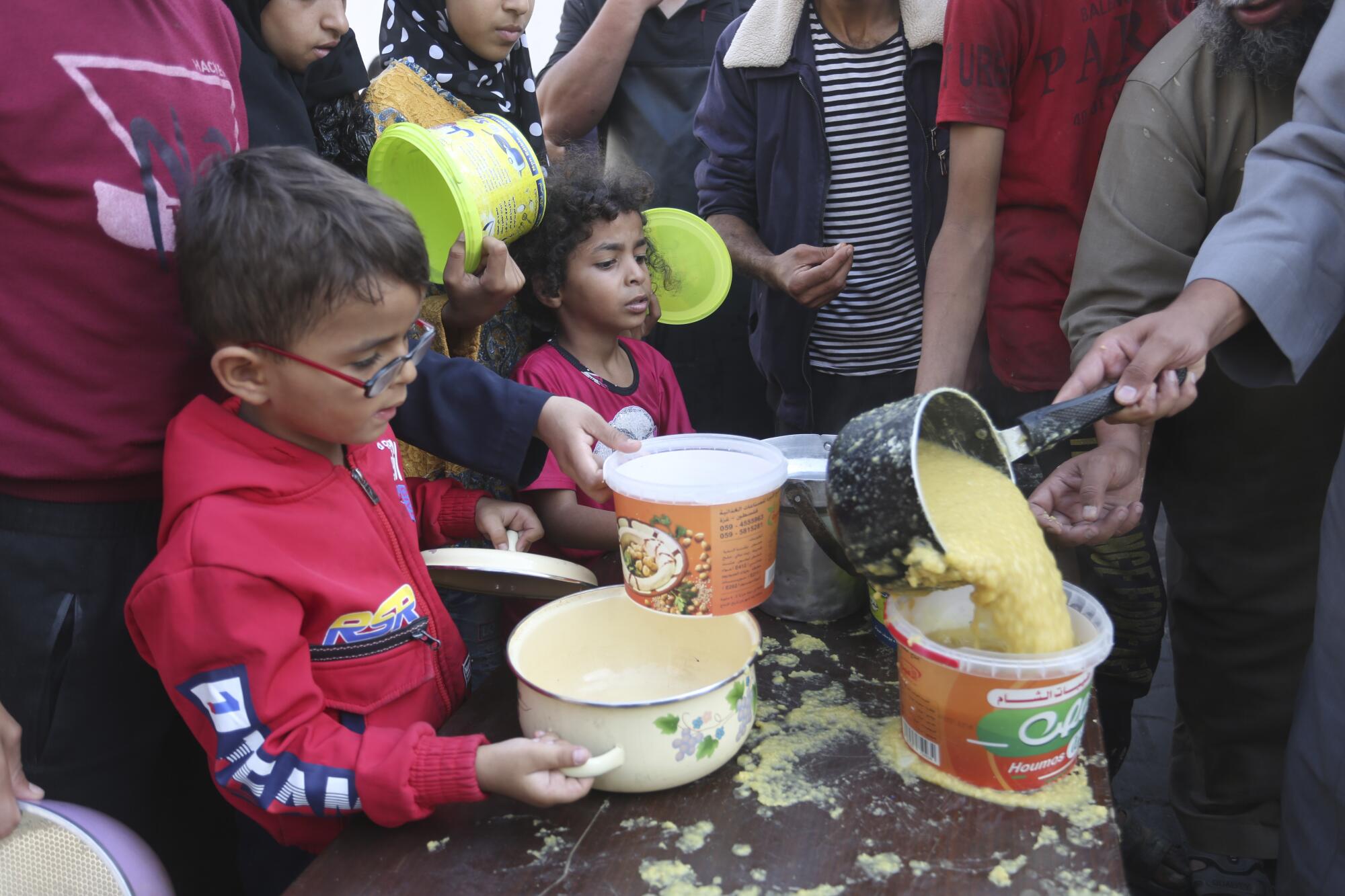
The U.S. has pushed for temporary pauses that would allow for wider distribution of badly needed aid. Israel has agreed only to daily windows during which civilians can flee ground combat in northern Gaza along two main roads, while continuing to strike what it says are militant targets across the territory, often killing women and children.
More than 100,000 people have marched in Paris to protest against rising antisemitism in the wake of Israel’s ongoing war against Hamas in Gaza.
Saib abu Hashish said he has been trapped on the ground floor of his family home along with 27 others in Gaza City. They haven’t left the house in three days and are running out of food and water. He said their neighbors attempted to escape the area Sunday, but Israeli forces opened fire on them.
“We want to leave, but we can’t because of the bombing,” he said by phone. “If we survive the bombing, we will die from hunger.”
Those who make it to the south face a host of other difficulties. United Nations-run shelters are overflowing, and the lack of fuel has paralyzed water treatment systems, leaving taps dry and sending sewage into the streets. Israel has barred the import of fuel for generators.
As of Friday, more than 11,000 Palestinians, two-thirds of them women and children, have been killed since the war began, according to the Health Ministry in Gaza, which does not differentiate between civilian and militant deaths. About 2,700 people have been reported missing. Health officials have not updated that toll, citing the difficulty of collecting information.
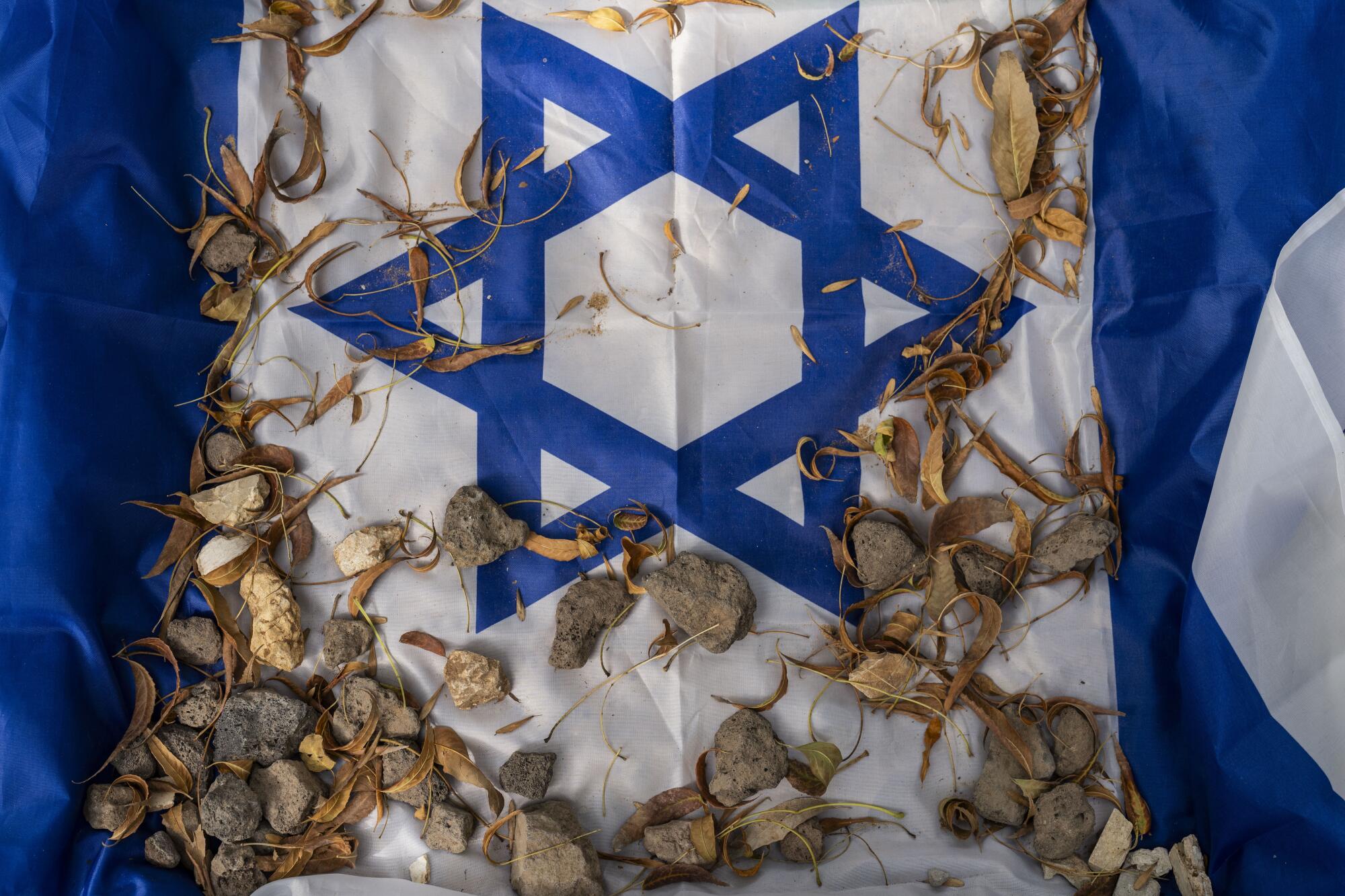
At least 1,200 people have died on the Israeli side, mostly civilians killed in the initial Hamas attack. Palestinian militants are holding nearly 240 hostages seized in the raid, including women, children and older adults, Israel says. The military says 44 soldiers have been killed in ground operations in Gaza.
About 250,000 Israelis have evacuated from communities near Gaza, where Palestinian militants are still firing barrages of rockets, and along the northern border with Lebanon, where Israel and the militant group Hezbollah have repeatedly traded fire, including on Monday.
More to Read
Sign up for Essential California
The most important California stories and recommendations in your inbox every morning.
You may occasionally receive promotional content from the Los Angeles Times.

